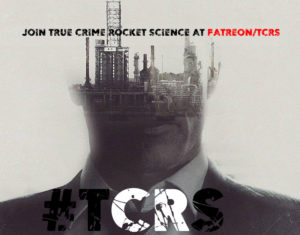What does former Colorado Governor John Hickenlooper have to do with the Chris Watts case? Nothing? How about everything?
I’ve been covering the Chris Watts case since the news broke in mid-August 2018. I’ve been blogging about the case daily, often multiple times daily. I’ve also written six books over the last six months. Right now, since the case itself is finally taking something of a breather, so am I.
In the last two weeks it’s fair to say the tap of coverage relating to the Watts case went from running, to dripping to no longer dripping at all. And it was within this window of the Watts case finally “drying up” that Hickenlooper leaped and announced his candidacy. Coincidence?
On January 22nd, Howard Schultz, an former CEO of Starbucks announced he was running for the 2020 elections as an independent candidate. During this period the media speculated on the selling of Chris Watts’ home, only for the sale to be postponed to April.
On February 9th, a few days shy of the doorbell footage showing Shan’ann arriving home [which scorched the internet], Elizabeth Warren announced her candidacy. Hickenlooper meanwhile, bided his time.
A few days later, on February 13th, Chris Watts announced he wasn’t going to contest the civil suit filed by Shan’ann’s lawyers. Five days later, on February 19th, around the same time a trio of investigators were quizzing Watts in a Wisconsin prison, Bernie Sanders announced his candidacy. Hickenlooper meanwhile, bided his time.
What does former Colorado Governor John Hickenlooper have to do with the Chris Watts case? Nothing? What does the timing around a criminal case that’s been mothballed have to do with a Colorado governor, whose term expired on January 8th, 2019, running for president? Maybe nothing, or maybe more than nothing.


‘That’s How You Spell Recession’: Hickenlooper To Explore Options If Prop 112 Passes – CBS [November, 2018]
“You want to minimize the unintended collateral damage…This [fracking] is a big part of state’s economy. You’re talking 15 percent, some people say as much as 20 percent, of the state’s economy. And suddenly it goes to half? That is how you spell recession. And I think everybody needs to take a long, slow look and say ‘Alright, how do we go forward?’ — if it passes — ‘How do we get to what was intended?’”


Pro-Fracking Dem John Hickenlooper Hires Firm That Rebranded BP
2020 candidate who said ‘fracking is good’ hires firm that moved oil giant ‘beyond petroleum’
GOVERNOR HICKENLOOPER AGREES, FRACKING IS GOOD FOR COLORADO
“Based on experience and science, I recognized that fracking was one of our very best and safest extraction techniques. Fracking is good for the country’s energy supply, our national security, our economy, and our environment.”
Colorado Governor’s Memoir Extols Fracking as “Very Best and Safest Extraction Technique”
“It seemed to me at the time that the way some media and activists were going after fracking was reminiscent of the early twentieth century, when the media skewered the oil and gas industry, personified by John D. Rockefeller. Only in our era, it was often bloggers wedded to a particular agenda who led the charge, cherry-picking some shreds of truth, or untruths, to make popular but inaccurate stories.” (Pg. 279; emphasis added)
“The number of people in Colorado who want to ban hydrocarbons is probably a small minority,” he said…











Via Wikipedia:

THE FOSSIL FUEL INDUSTRY SPENT $100 MILLION TO KILL GREEN BALLOT MEASURES IN THREE STATES — AND WON – The intercept
...when she moved her family from Louisiana back home to Weld County, Colorado, in 2016. Soon after, Nelson’s friend encouraged her to come out to a meeting where Lisa McKenzie, an environmental chemist and epidemiologist at the Colorado School of Public Health, was presenting her research on the health impacts of oil and natural gas drilling.
Weld County has one of the highest concentrations of oil and gas wells in the country — 23,000 within county limits. Its air quality carries an “F” rating from the American Lung Association, with infant mortality rates twice as high as those in surrounding counties. With around 50,000 active wells overall, Colorado just surpassed California to become America’s third-largest oil and gas producer after Texas and North Dakota.
“It was a crash course in fracking,” Nelson told me by phone. Colorado law, she learned, states that drilling operations have to be 1,000 feet away from school buildings, but that ordinance — known as a setback — doesn’t include surrounding school properties, like playgrounds or soccer fields. There, as McKenzie would explain, kids playing and running around breathe harder and heavier, increasing the amount of poisoned air that enters their lungs and bloodstream.
All of this hit too close to home: As she also learned, oil companies had just been approved to open 24 new drill sites near her then-4-year-old son Diego’s school, the kindergarten through third grade campus of Bella Romero Academy; the drilling would take place just behind the fourth through eighth grade campus, where her niece and nephew were students. The decision to drill near Bella Romero at all — where 87 percent of attendees are students of color, and 90 percent fall below the poverty line — was made after parents at an overwhelmingly white school refused to have the same rigs in their kids’ backyards.
Shocked by what she discovered, Nelson joined a coalition that would later become known as Colorado Rising and traveled around the state, telling people about the stakes at her son’s school. Colorado Rising’s work included a push for Proposition 112, a ballot measure to mandate a 2,500-foot setback zone between drill sites and homes, schools, and other vulnerable areas. That measure was defeated 57 to 43 on Tuesday night, in large part thanks to a full-fledged freakout by the fossil fuel industry, which, with $40 million, outspent Prop 112 proponents by at least 40 to 1.
…one clear takeaway from the midterms ballot initiatives is that fossil fuel money can buy elections. Apparently, $100 million can buy four of them. “They’re putting up big numbers,” said Edgar Franks, a Bellingham-based labor organizer who helped draft and campaign for I-1631 with the environmental justice group Front and Centered. “You can tell that where this is actually a threat to the way that they do business, because they know it’s going to work.”
The bar for improving Hickenlooper’s record on extraction has been set pretty low. The outgoing governor had threatened to call a special lame duck session of the state legislature in the event of Prop 112’s passage.“ It’s incredibly undemocratic,” said Parkin in advance of the vote. “The very idea that he would think it’s OK to turn around and ignore the will of the people, when thousands of his own constituents have worked so hard.”
The statement wasn’t unprecedented for Hickenlooper. In 2013, he openly threatened to sue any city that banned fracking within its borders and in fact, did sue Longmont and Fort Collins after they implemented restrictions on fracking. The state’s suit also undermined the legal standing of three other bans and moratoria. “Topics like these,” Nelson told me, “are the ones that enable the true colors of our representatives to come out. It just shows that he’s never been on the side of the people, he’s been on the side of industry.”



































































































Recent Comments